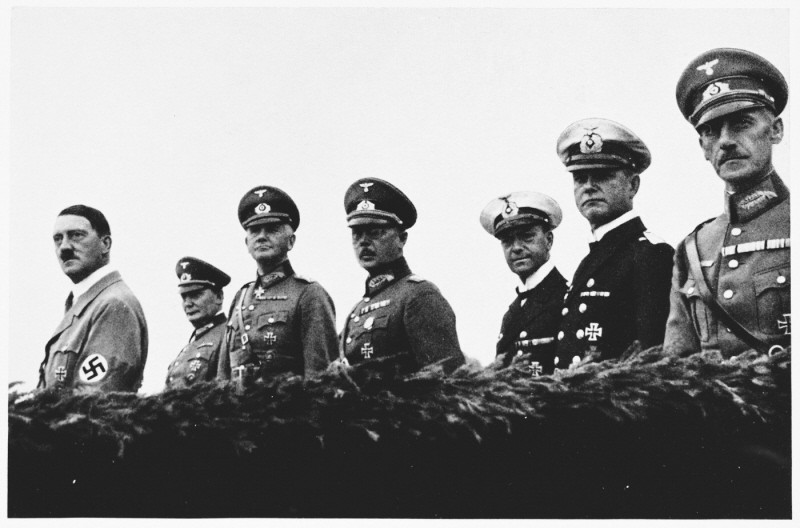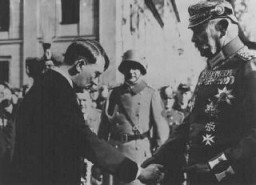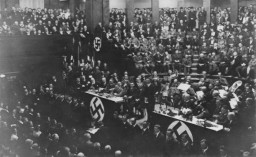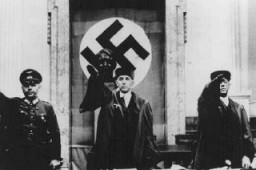
Adolf Hitler: Early Years, 1889–1913
Adolf Hitler (1889–1945) was born on April 20, 1889, in the Upper Austrian border town Braunau am Inn, located approximately 65 miles east of Munich and nearly 30 miles north of Salzburg. He was baptized a Catholic.
His father, Alois Hitler (1837–1903), was a mid-level customs official. Born out of wedlock to Maria Anna Schickelgruber in 1837, Alois Schickelgruber had changed his name in 1876 to Hitler, the Christian name of the man who married his mother five years after his birth.
Alois Hitler's illegitimacy would cause speculation as early as the 1920s—and still present in popular culture today—that Hitler's grandfather was Jewish. Credible evidence to support the notion of Hitler's Jewish descent has never turned up. The two most likely candidates to have been Hitler's grandfather are the man who married his grandmother and that man's brother.
Linz
In 1898, the Hitler family moved to Linz, the capital of Upper Austria. Hitler wanted a career in the visual arts. He fought bitterly with his father, who wanted him to enter the Habsburg civil service. After his father's death, Hitler eventually persuaded his mother, Klara Hitler, née Pölzl, to permit him to pursue his dream of becoming an artist. As Klara was dying of breast cancer in the autumn of 1907, Hitler took the entrance exam to the Vienna Academy of the Arts. He failed to gain acceptance. In early 1908, some weeks after Klara's death in December 1907, Hitler moved to Vienna, ostensibly in the hope of renewing efforts to enter the Academy of Arts.
Vienna
Hitler lived in Vienna between February 1908 and May 1913. He had grown up in a middle-class family, with relatively few contacts with Jewish people, in a region of the Habsburg state in which many German nationalists had been disappointed that the German Empire founded in 1871 had not included the German-speaking regions of the Habsburg Monarchy. Yet the legacy of the Vienna years is not as clear as Hitler depicted it in his political autobiography. His impoverishment and residence in homeless shelters began only a year after his arrival and after he had frittered away a generous inheritance left by his parents and rejected all arguments of surviving relatives and family friends that he embark upon a career in the civil service.
By the end of 1909, Hitler knew real poverty as his sources of income dried up. That winter, however, helped briefly by a last gift from his aunt, he began to paint watercolor scenes of Vienna for a business partner. He made enough to live on until he left for Munich in 1913.
It is likely that Hitler experienced, and possibly also shared, the general antisemitism common among middle-class German nationalists. Nevertheless, he had personal and business relationships with Jews in Vienna. He was also, at times, dependent in part on Jews for his living. While this may have been a cause for discretion about his actual feelings about Jews, it was not until after World War I that Hitler can be demonstrated to have adopted an “antisemitic” ideology.
Influences upon Hitler in Vienna
Hitler was genuinely influenced in Vienna by two political movements. The first was the German racist nationalism propagated by the Upper Austrian Pan-German politician Georg von Schönerer. The second key influence was that of Karl Lueger, Mayor of Vienna from 1897 to his death in 1910.
Lueger was still in power when Hitler arrived in Vienna. Lueger promoted an antisemitism that was more practical and organizational than ideological. Nevertheless, it reinforced anti-Jewish stereotypes and cast Jews as enemies of the German middle and lower classes. Unlike Schönerer, who was more comfortable with the elitist nationalism of the student fraternities, Lueger was comfortable with big city crowds and knew how to channel their protest into political gain. Hitler drew his ideology in large part from Schönerer, but his strategy and tactics from Lueger.
Munich
Hitler moved to Munich, Germany, in May 1913. He did so to avoid arrest for evading his military service obligation to Habsburg Austria. He financed his move with the last installment of his inheritance from his father. In Munich, he continued to drift. He supported himself on his watercolors and sketches until the outbreak of World War I gave his life direction and a cause to which he could commit himself totally.
Critical Thinking Questions
- What political and social trends and attitudes may have influenced Hitler at this time?
- What personal pressures and motivations may have influenced Hitler at this time?







